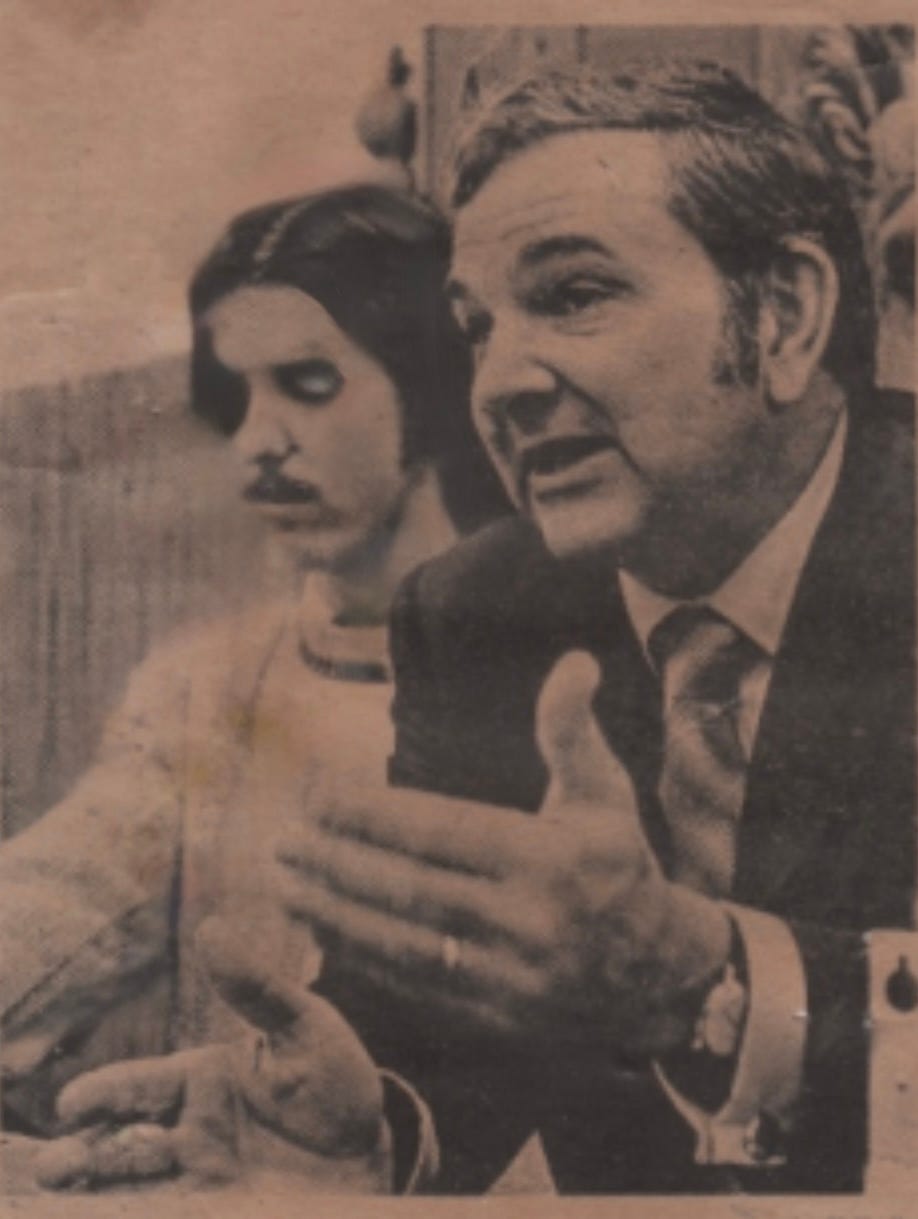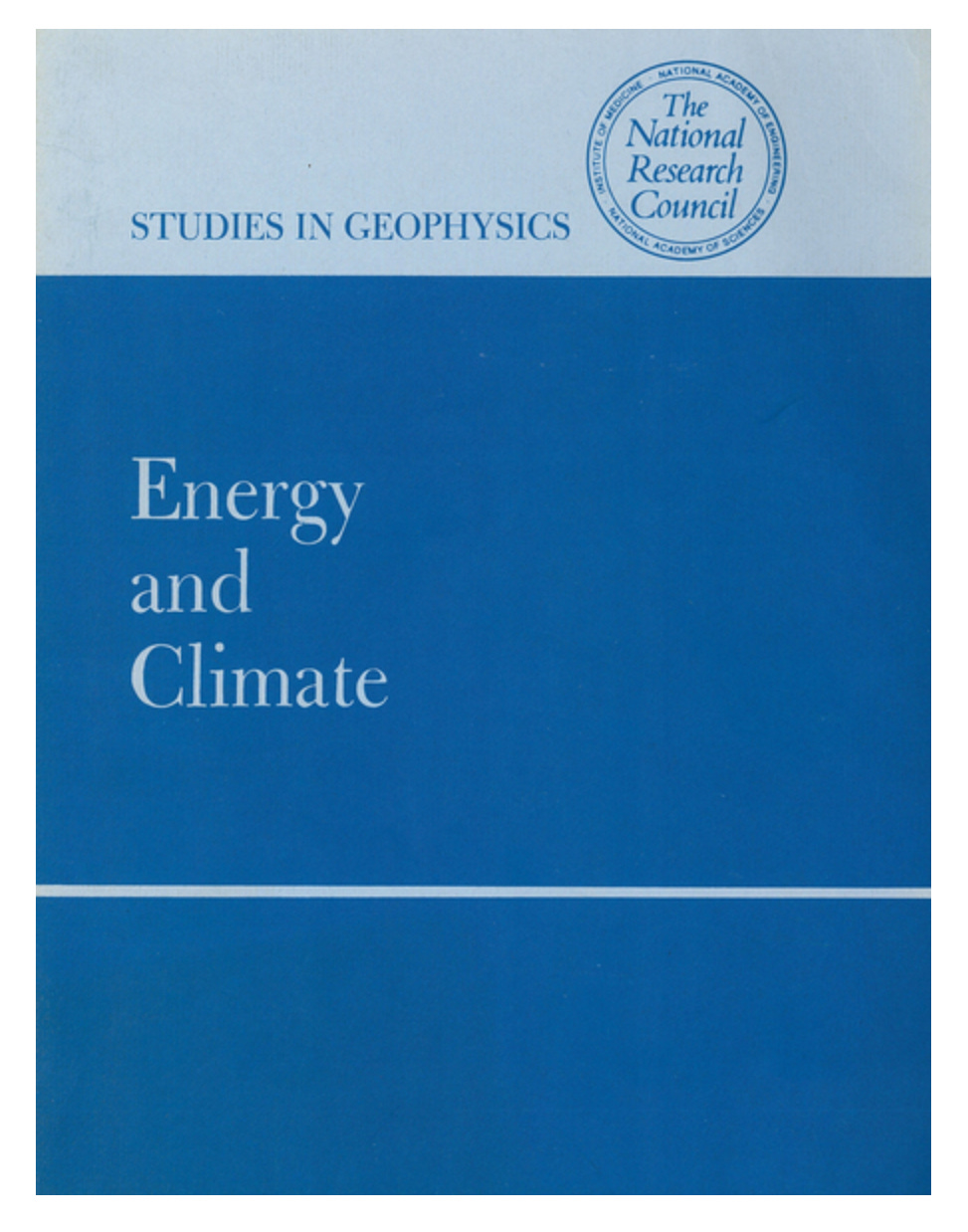The Beginnings of Climate Action in the United States
Our Story Together Subseries 1.4
So far we’ve covered the beginnings of anti-pollution efforts starting in the latter part of the 19th Century in the United States, and the maturation of such efforts in the 20th, including the creation of an environmental consciousness, strong environmental laws, and the creation of state and federal agencies including the Environmental Protection Agency (EPA).
And now we come to the climate story. For efforts to address climate pollution, we still have the three basic anti-pollution actors we’ve had since the 19th Century:
pro-action types — regular folk activists and supporters;
experts — scientists and engineers, and;
government-affiliated decisionmakers — politicians, regulators, and judges.
But there is an interesting difference between the environmental pollution story and the climate story. With environmental pollution, those pushing everyone to act were the activists who were indispensable to meaningful action.
Scientists, Not Activists, Were the First to Call for Action
In contrast, the climate story begins not with regular folk pissed off about experiencing pollution and the degradation of their quality of life. Rather, the calls for action came from those scientists not affiliated or associated with industry but rather with academia, research institutes, and government.
They warned of dire consequences from an invisible gas people breath out every moment of their lives.
In contrast to air and water pollution, regular folk couldn’t see it or smell it or taste it or yet experience its deadly and destructive ramifications. And what were going to be the main impacts? Floods and droughts — things humanity has always had to deal with since the dawn of time — were going to get worse and more frequent. But climate has been better and worse throughout human history.
Who’s to say the bad times are not just natural variability instead of climate change caused by an invisible gas we breathe out?
An Unfair Playing Field Tilted in Favor of Opponents
As a result, climate change was not like any problem caused by pollution humanity had ever faced. To top it off it is a global problem, whose consequences were not yet apparent locally, taking place way up in some part of the atmosphere most people had never heard of, invisible to the naked eye.
In other words, the other two actors, regular folk and government-affiliated decision-makers, i.e., politicians, regulators, and judges, had to trust scientific experts instead of relying on their own senses and their common sense.
Taken together, these characteristics created an unfair playing field tilted in favor of the opponents of climate action.
This helps explain why it was non-industry scientists that spurred the first meaningful climate efforts, not environmental groups specifically or the Environmental Movement more generally.
Revelle and Keeling to the Rescue
Climate science pioneers Roger Revelle and Charles David Keeling and others began demonstrating in the late 1950s and early 1960s how it could be a serious problem. Beginning in 1956 and for several years thereafter Revelle testified before Congress about the importance of funding climate research, saying in 1959 it should not be allowed to fail:
“We know that the average weather conditions we call climate can change over a few decades, and we suspect that changes in the storage of gases and heat in the oceans will profoundly influence the process.”1
By 1965 President Johnson (based on the work of Revelle and his team) issued a warning to Congress:
“This generation has altered the composition of the atmosphere on a global scale through radioactive materials and a steady increase in carbon dioxide from the burning of fossil fuels.”2
Rep. George Brown, Climate Hero
The scientists were joined in leadership by a few far-sighted politicians like Rep. George Brown (D-CA) who held the first climate hearings in 1976, introduced the first significant climate legislation that year, and led the effort to pass it in 1978. It was a very modest beginning with an underfunded research program, hamstrung by not having a movement or organizations calling for action. As such, it was an incredible feat to get it passed at all.
The National Academy of Sciences Tells Us All We Need to Know — in the 1970s
During this time the US National Academy of Sciences issued three reports from research committees in 1975, 1977, and 1979.
Of course these were very obscure reports that no one even knew about or paid attention to — right? Wrong.
The 1977 report by their Energy and Climate Committee, Chaired by Roger Revelle, was widely reported in the media. A front page article on July 25 in the New York Times was headlined: “Scientists Fear Heavy Use of Coal May Bring Adverse Shift in Climate.”3 The article said that climate change “could radically disrupt food production, lead to a 20‐foot rise in sea level and seriously lower productivity of the oceans.” The report forthrightly stated that a major shift away from fossil fuels could be required:
“Worldwide industrial civilization may face a major decision over the next few decades—whether to continue reliance on fossil fuels as principal sources of energy or to invest the research and engineering effort, and the capital, that will make it possible to substitute other energy sources for fossil fuels within the next 50 years.”4
It warned that what made the climate problem so different from other environmental problems – its lack of a personal experience of cause and effect – is also what helped to make it so dangerous:
“If the decision [to act] is postponed until the impact of man-made climate changes has been felt, then, for all practical purposes, the die will already have been cast.”5
Thus, it called upon government leaders and organizations to act with wisdom:
“The possibility of modification of the world’s climate by carbon dioxide released in the production of energy from fossil fuels should be given serious prompt consideration by concerned national and international organizations and agencies.”6
The 1979 report from a study group on climate had a statement that is as strong as anything ever written by a nationally or internationally recognized scientific body:
“We now have incontrovertible evidence that the atmosphere is indeed changing and that we ourselves contribute to that change.”7
Such conclusions were reinforced by a major report by President Carter’s Council on Environmental Quality (CEQ) issued in March 1980 days before they were to leave office that included a brief discussion of climate change.
Ok, some good reports from long ago, a NYTimes story, a mention in a report as Carter’s CEQ was headed out the door. Yada yada. But the public wasn’t concerned back then — right? Wrong.
Public Concerned Early On
Amazingly, a 1980 poll conducted by the Opinion Research Corporation in the US showed that fairly early on, of the 38% who were aware of climate change, 65% of them were concerned: 37% considered global warming “very serious,” while 28% considered it “somewhat serious.”8 These folks listened to the scientists.
While not quite an apples-to-apples comparison, this level of concern by those who have heard of climate change has rarely been equaled since, as demonstrated by looking at the results from a similar poll by Yale/George Mason every year since 2008.
As can be seen from the Yale/Mason graph above, with my hand drawn addition of the Opinion Research Corporation poll results added in, the percentage of those in 1980 who knew of climate change and considered it a “serious” concern equals those who are “worried” about climate change in 2025 — 65%. Those who considered climate change a “very serious” concern in 1981 — 37% — has never been equaled by those who say they are “very worried” in the Yale/Mason polls.
Even without serious engagement by the environmental movement and environmental organizations, and the Climate Movement not even on the horizon, the level of concern by those who had listened to the scientists in 1980 has only been equaled recently.
So what happened? Stay tuned!
If you are new here check out our Intro Series, as well as earlier posts in this Our Story Together Series. If you like this post, please “like,” comment, and share. And thanks for all you’re doing.
Roger Revelle, “Statement of Dr. Roger Revelle Concerning the Oceanography Investigation,” Testimony Before the Subcommittee of the Committee on Appropriations of the House of Representatives, Report on the International Geophysical Year (Feb. 1959): p. 76.
President Johnson’s quote found in an article by Marianne Lavelle, “A 50th Anniversary Few Remember: LBJ’s Warning on Carbon Dioxide,” Energy Central (Feb. 2, 2015). A scientific report for President Johnson with a chapter on climate change was released later that year. See Restoring the Quality of Our Environment, Report of the Environmental Pollution Panel, President’s Science Advisory Committee, The White House (November 1965).
Spencer Weart, Discovery of Global Warming, (Harvard University Press, 2008): p. 102; see pp. 99-102.
National Academy of Sciences, Geophysical Research Board, Geophysics Study Committee, Panel on Energy and Climate, Energy and Climate: Studies in Geophysics (1977): p. 1.
NAS, Energy and Climate: Studies in Geophysics, p. 3.
NAS, Energy and Climate: Studies in Geophysics, p. 5.
See National Academy of Sciences, Report of an Ad Hoc Study Group on Carbon Dioxide and Climate, Carbon Dioxide and Climate: A Scientific Assessment, (1979): p. vii.
James Hansen’s 1988 testimony, which many think of as a break-through moment in society for climate change, came seven years after this poll and over 10 years after these first two NAS committee reports.







